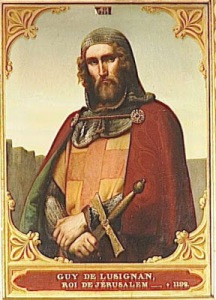Since the Curse of the Lost Isle medieval fantasy series is based upon authentic legends, I get to see the places where my characters may have roamed a millennium ago.
As I am revising ANGEL OF LUSIGNAN for publication in January 2017, I feel very excited about this last novel in the series.
As I am revising ANGEL OF LUSIGNAN for publication in January 2017, I feel very excited about this last novel in the series.
One might believe because Melusine is an immortal Fae, that she did not exist. When you visit Lusignan, however, she seems very real. The entire region of northern Aquitaine is called "Melusine country" and traces of the ondine with a scaly tail is still alive there.
I can see my hero and heroine in this terrain, under the walls of the castle. In Lusignan and all around, in Vouvant and Mervent, you find her name on the many shops.
She is on the facade of official buildings, sometimes discreet, and sometimes flaunting her scales or her dragon wings to whomever is passing by.
I can see my hero and heroine in this terrain, under the walls of the castle. In Lusignan and all around, in Vouvant and Mervent, you find her name on the many shops.
She is on the facade of official buildings, sometimes discreet, and sometimes flaunting her scales or her dragon wings to whomever is passing by.
Moreover, Melusine founded the very real family of Lusignan, a royal house of French origin, which
ruled much of Europe and the Levant, including the kingdoms of
Jerusalem, Cyprus, and Armenia, from the 12th through the 15th centuries
during the Middle Ages.
Out of this family came not only the royal family of Lusignan, but later, through Eleanor of Aquitaine, the royal families of England, and the Valois and the Bourbon royal families of France.

Learn more about the legend of Melusine, her mother and her sisters, in the Curse of the Lost Isle medieval fantasy series HERE
From history shrouded in myths, emerges a family of immortal Celtic Ladies, who roam the medieval world in search of salvation from a curse. For centuries, imbued with hereditary gifts, they hide their deadly secret, stirring passions in their wake as they fight the Viking hordes, send the first knights to the Holy Land, give birth to kings and emperors... but if the Church ever suspects what they really are, they will be hunted, tortured, and burned at the stake.
HAPPY READING!
Vijaya Schartz
Blasters, Swords, Romance with a Kick
http://www.vijayaschartz.com
Amazon - Barnes & Noble
HAPPY READING!
Vijaya Schartz
Blasters, Swords, Romance with a Kick
http://www.vijayaschartz.com
Amazon - Barnes & Noble









































